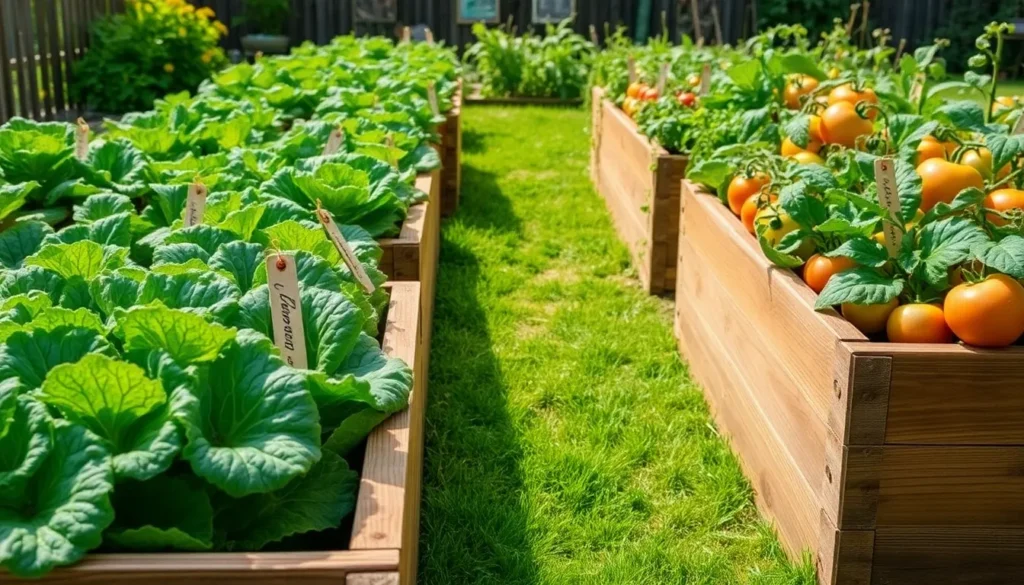Welcome to the delightful world of raised bed gardening, where both beginner and seasoned green thumbs find ample room to grow, experiment, and harvest. Whether you’re just starting your gardening journey or have years of soil under your nails, this guide promises to enrich your vegetable-growing experience with practical insights and time-tested techniques.
In this collection of 10 invaluable tips, you’ll discover the secrets to maximizing your yield while minimizing common gardening pitfalls. Harness the full potential of your raised beds to enjoy bountiful harvests, healthier plants, and a more enjoyable gardening routine, all while cultivating a deeper connection with the earth.
Imagine stepping into your garden, greeted by the vibrant colors and fresh scents of thriving vegetables, and knowing that you made it happen. With these expert tips in your toolkit, you’ll not only cultivate a thriving garden but also cultivate your confidence as a successful gardener, reaping rewards far beyond the delicious produce you’ll bring to your table.
Choose Quality Soil Mix

Choosing the right soil mix is crucial for the success of your raised bed vegetables. A well-balanced soil mix should provide the necessary nutrients and drainage for optimal growth.
Begin with a base of high-quality topsoil, which forms the foundation of your mix. Topsoil alone isn’t sufficient, so you should combine it with other components for best results.
Incorporate compost into your soil mix, as it adds essential nutrients and enhances soil structure. Aim for a ratio of about 60% topsoil to 40% compost to create a nutrient-rich environment.
For better aeration and drainage, include materials like perlite or vermiculite in your mix. These elements help prevent soil compaction, ensuring that your plant roots receive adequate air and moisture.
Seasoned gardeners might consider adding worm castings or well-rotted manure for an extra nutrient boost. These organic amendments can improve the soil’s microbial activity, benefiting plant health and yield.
Plan for Optimal Sun Exposure
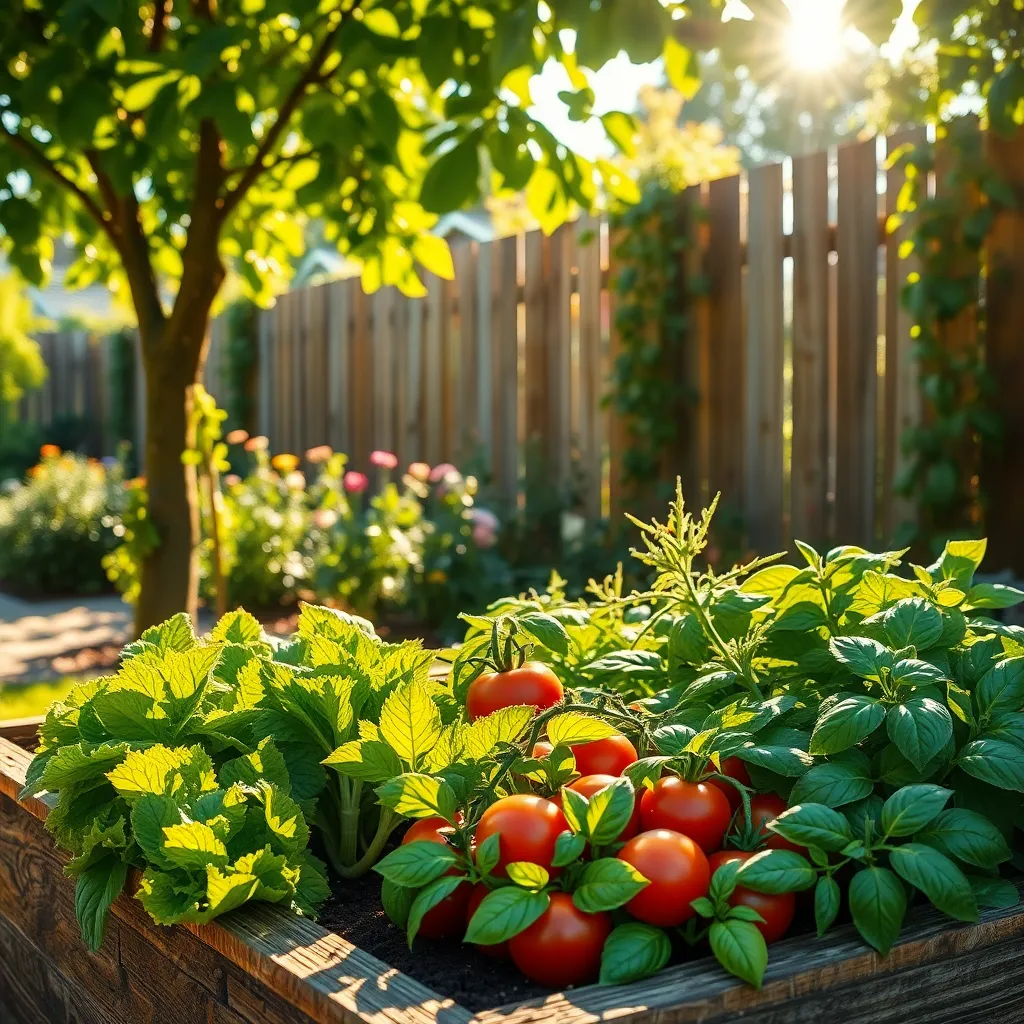
To maximize the health and yield of your vegetables, it’s essential to plan for optimal sun exposure in your raised beds. Most vegetables require at least six to eight hours of direct sunlight per day, so position your beds in a sunny spot.
Observe your garden throughout the day to identify areas with consistent sunlight. If your garden has limited sun exposure, consider growing shade-tolerant vegetables like lettuce or spinach, or relocate your raised beds to a better-lit area.
For advanced gardeners, creating a sun map of your garden can be incredibly helpful. This involves tracking sunlight patterns at different times of the year to make informed decisions about where to plant specific vegetables.
Use vertical gardening techniques, such as trellises or plant supports, to maximize sun exposure for climbing plants. This approach also helps prevent shading smaller plants, ensuring they receive adequate sunlight.
Incorporate Organic Matter Regularly
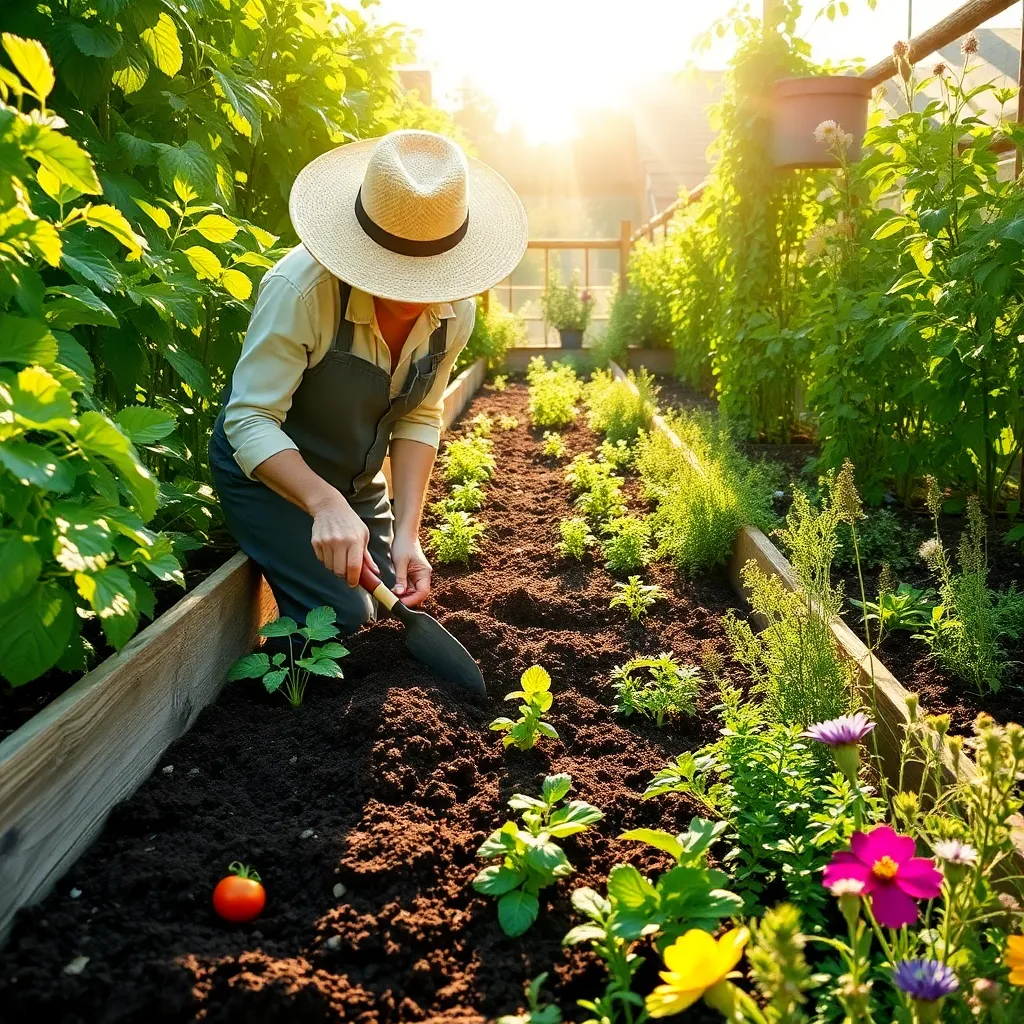
Regularly incorporating organic matter into your raised beds is crucial for maintaining healthy soil. By doing so, you enrich the soil with nutrients, improve its structure, and enhance its water retention capabilities.
Start by adding compost or well-aged manure to your soil at the beginning of each growing season. A layer of about one to two inches of organic matter can significantly boost plant growth and productivity.
Mulching with organic materials like straw, grass clippings, or shredded leaves can also be beneficial. This not only reduces weeds but as the mulch breaks down, it gradually adds nutrients back into the soil.
For those looking to further enhance their soil, consider introducing earthworms to your raised beds. Earthworms help aerate the soil and break down organic matter, making nutrients more accessible to plants.
Space Plants for Air Circulation

Proper spacing of plants in raised beds is crucial for ensuring good air circulation, which helps reduce the risk of fungal diseases. Aim to provide at least 12 inches of space between small plants like lettuce and up to 24 inches for larger plants such as tomatoes or peppers.
For beginners, using a grid system can simplify spacing and ensure that each plant has enough room to thrive. This method involves dividing your raised bed into square-foot sections and planting according to the specific requirements of each vegetable variety.
Experienced gardeners might consider companion planting, which can enhance air circulation and improve soil health. For example, planting basil near tomatoes not only deters pests but also helps in maintaining airflow between the plants.
Remember that soil type also affects how plants should be spaced. In dense or clay-heavy soils, allowing a bit more space can help roots access the oxygen they need, while looser, well-draining soils can support slightly closer planting.
Install Efficient Drip Irrigation
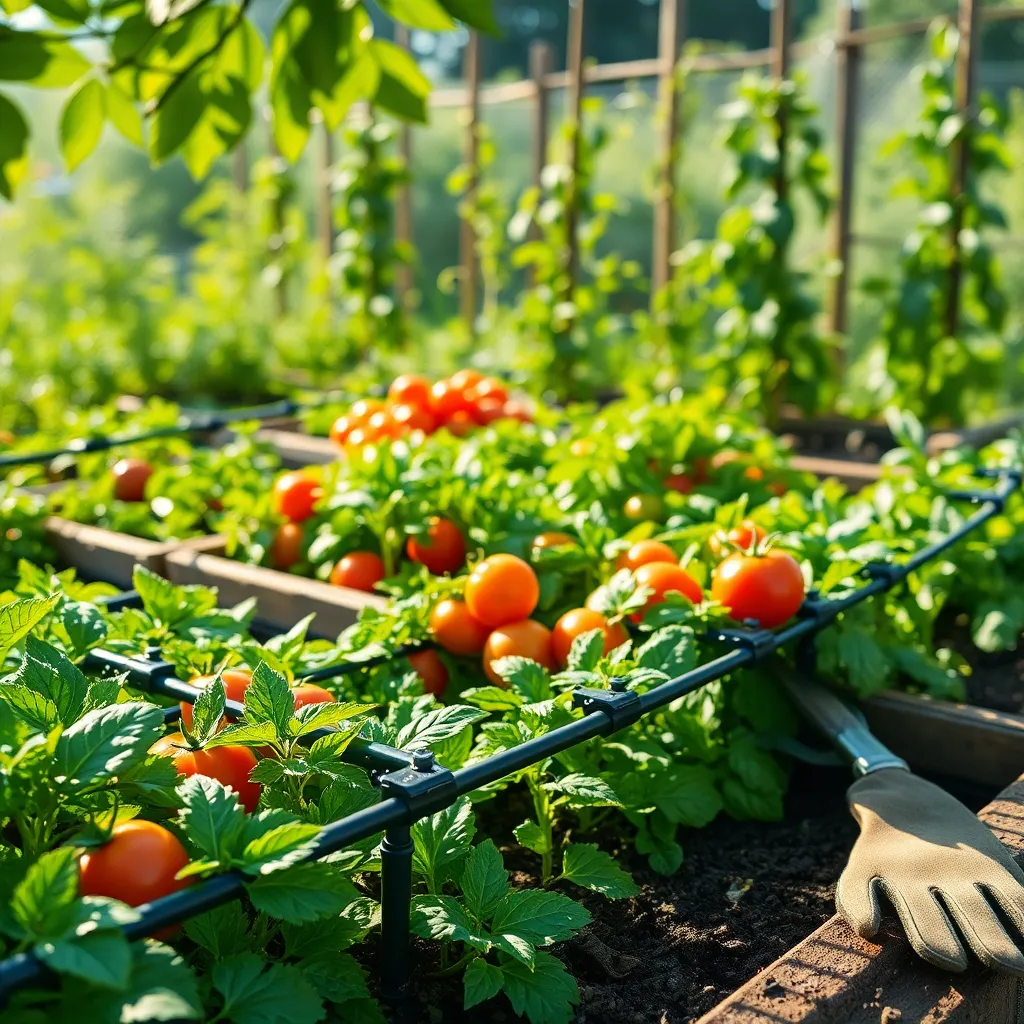
Installing an efficient drip irrigation system in your raised beds can significantly improve water management. This method delivers water directly to the plant roots, minimizing evaporation and runoff.
To start, gather materials like drip tubing, emitters, and connectors, which are readily available at garden centers. Opt for a system with adjustable emitters, allowing you to customize water flow based on the specific needs of different plants.
Begin by laying out the drip tubing along the rows of your raised bed, keeping it close to the plant bases. Secure the tubing with stakes to prevent movement and ensure water reaches the intended areas.
Regularly check emitters for clogs, especially if using well or hard water, as mineral buildup can impede water flow. Consider installing a filter at the water source to prevent debris from entering the system and extend its lifespan.
Adjust the watering schedule according to seasonal changes and plant growth stages. In hot, dry conditions, increase the frequency, whereas during cooler months, reduce watering to prevent over-saturation.
Use Companion Planting Techniques
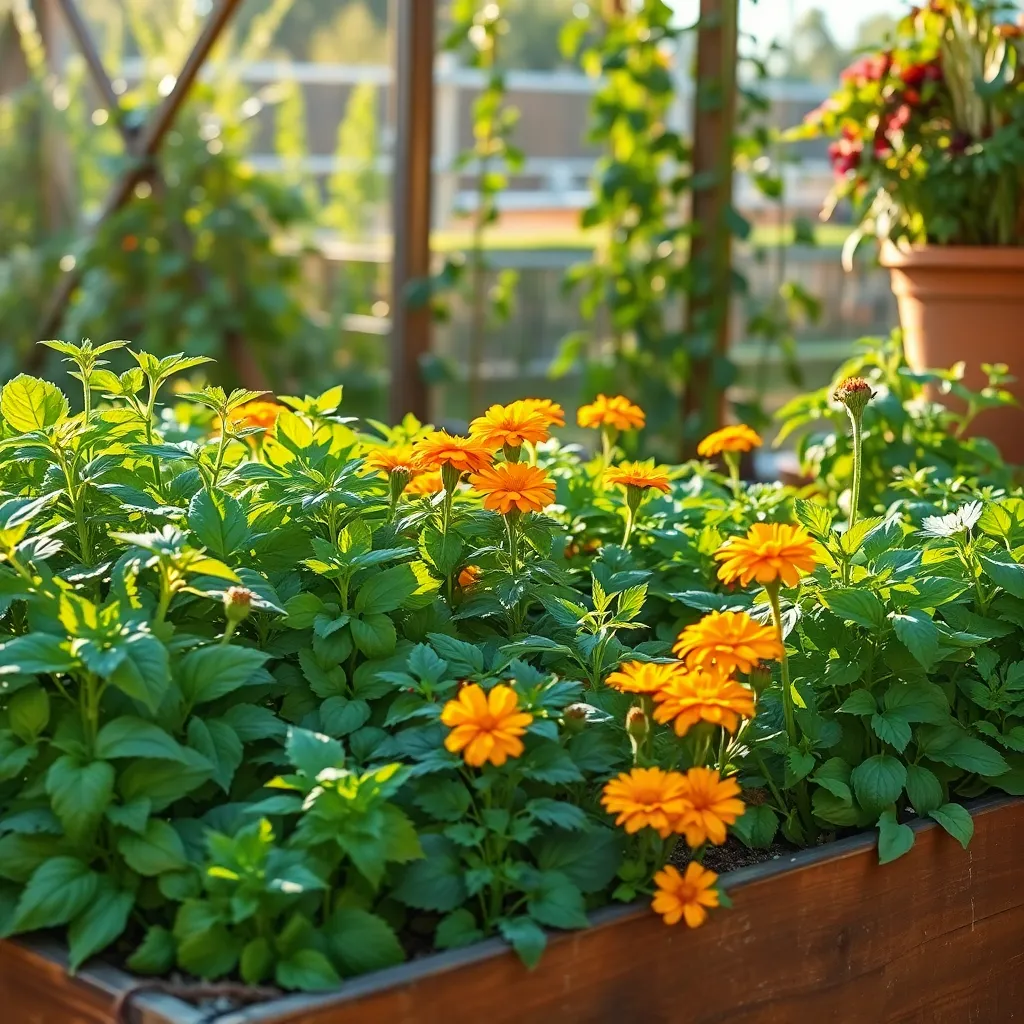
Companion planting is a technique that can significantly enhance the health and productivity of your raised bed garden. By pairing plants that benefit each other, you can optimize space and deter pests naturally. For instance, planting carrots with onions can help repel carrot flies, while onions enjoy the carrot’s natural deterrence of aphids.
Similarly, consider growing tomatoes alongside basil to improve flavor and repel pests like aphids and whiteflies. This aromatic herb not only enhances the taste of tomatoes but also attracts beneficial insects. Basil requires well-drained soil and full sun, making it an excellent partner for sun-loving tomatoes in your raised bed.
To maximize the benefits of companion planting, select plants with complementary root structures and nutrient needs. Deep-rooted plants like carrots can be paired with shallow-rooted companions such as lettuce, allowing both to thrive without competing for the same nutrients. This pairing also helps to maintain soil health by reducing nutrient depletion in specific soil layers.
Advanced gardeners might experiment with creating a mini ecosystem by incorporating plants like marigolds, which deter nematodes and attract pollinators, in your raised beds. This approach not only enhances plant health but also promotes biodiversity in your garden. Ensure that all plants receive adequate water and sunlight, adjusting the arrangement as needed for optimal growth.
Rotate Crops Annually
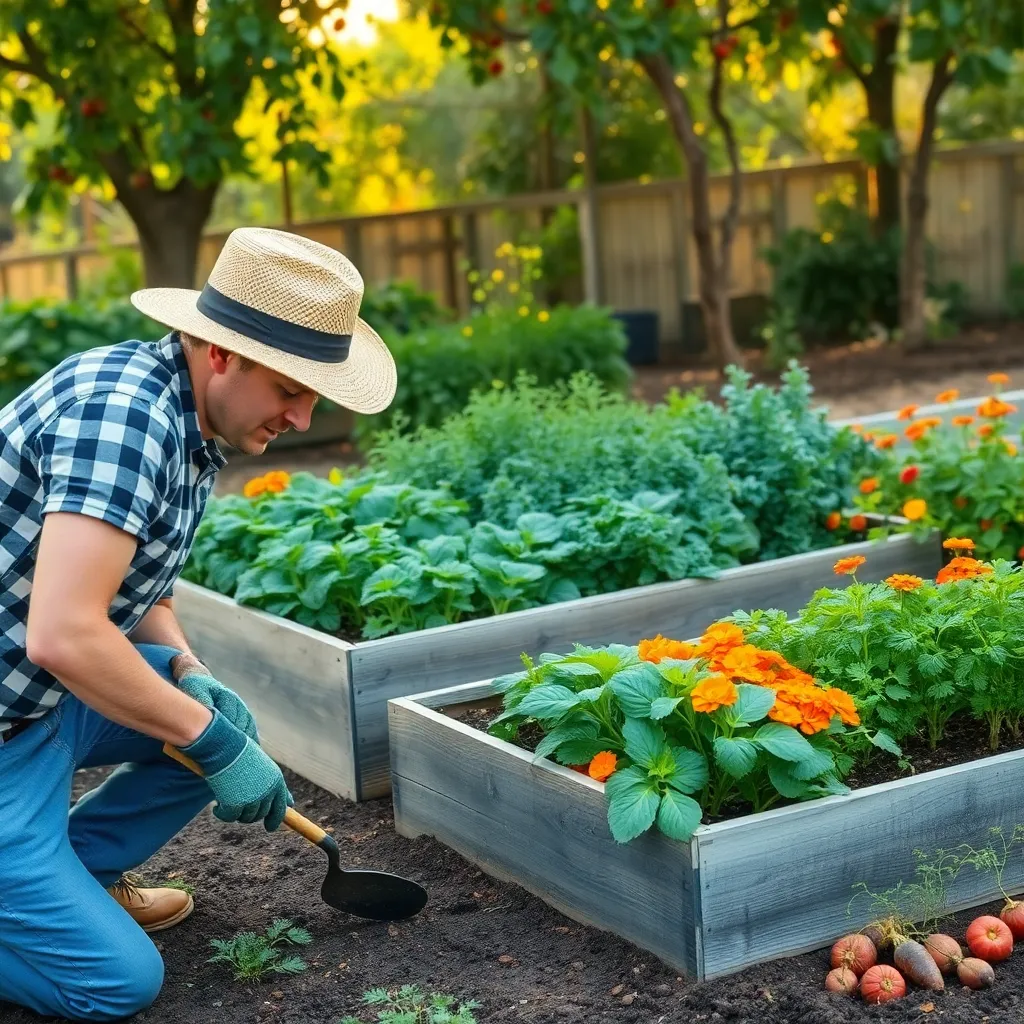
Crop rotation is a fundamental practice in gardening that involves changing the location of specific plant families each year. This method helps prevent soil depletion and reduces the risk of disease and pest buildup, ensuring healthier plants.
To implement crop rotation effectively, divide your raised bed into sections based on plant families. For instance, one year, you might have tomatoes in one area, followed by beans or leafy greens in the same spot the next year.
Rotating crops is particularly beneficial for plants like tomatoes, peppers, and potatoes, which are prone to soil-borne diseases. By rotating these plants with legumes or leafy greens, you can naturally replenish nitrogen levels and break the cycle of common pests.
Begin by planning your garden layout on paper, making note of where each plant family was grown in previous years. This simple step helps ensure you remember the rotation plan and contribute to a thriving garden season after season.
Protect Beds with Mulch
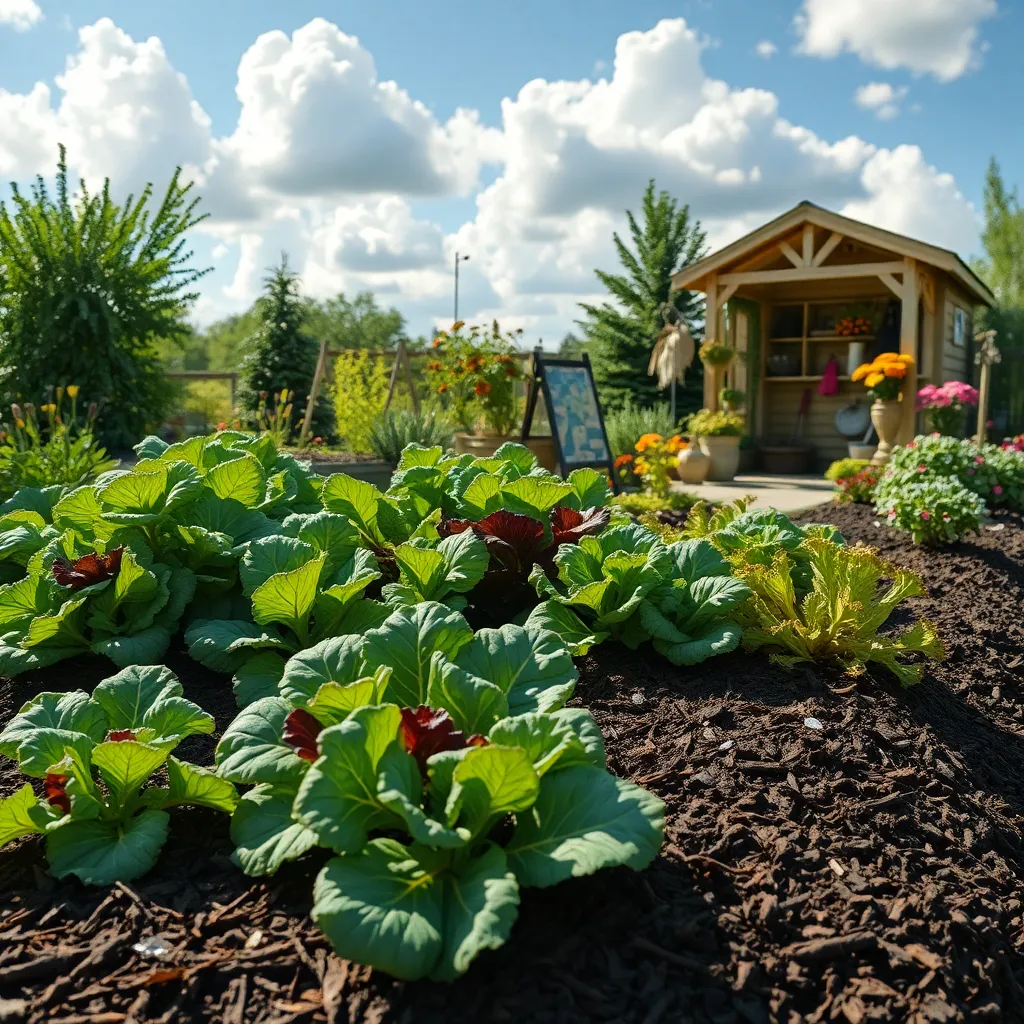
Mulching your raised vegetable beds is an excellent way to conserve moisture and suppress weeds. Organic mulches such as straw, shredded leaves, or grass clippings are particularly beneficial as they break down and enrich the soil over time.
Begin by applying a layer of mulch about 2-3 inches thick around your plants. This provides an insulating layer that helps regulate soil temperature, keeping roots cooler in summer and warmer in winter.
For best results, avoid placing mulch directly against plant stems to prevent rot and disease. Instead, leave a small gap around each plant base, ensuring good air circulation and reducing the chance of fungal issues.
Advanced gardeners might experiment with using different mulch types for specific plants. For instance, pine needles can be a great choice for acid-loving vegetables like tomatoes and peppers, as they add slight acidity to the soil as they decompose.
Add Trellises for Climbing Vegetables
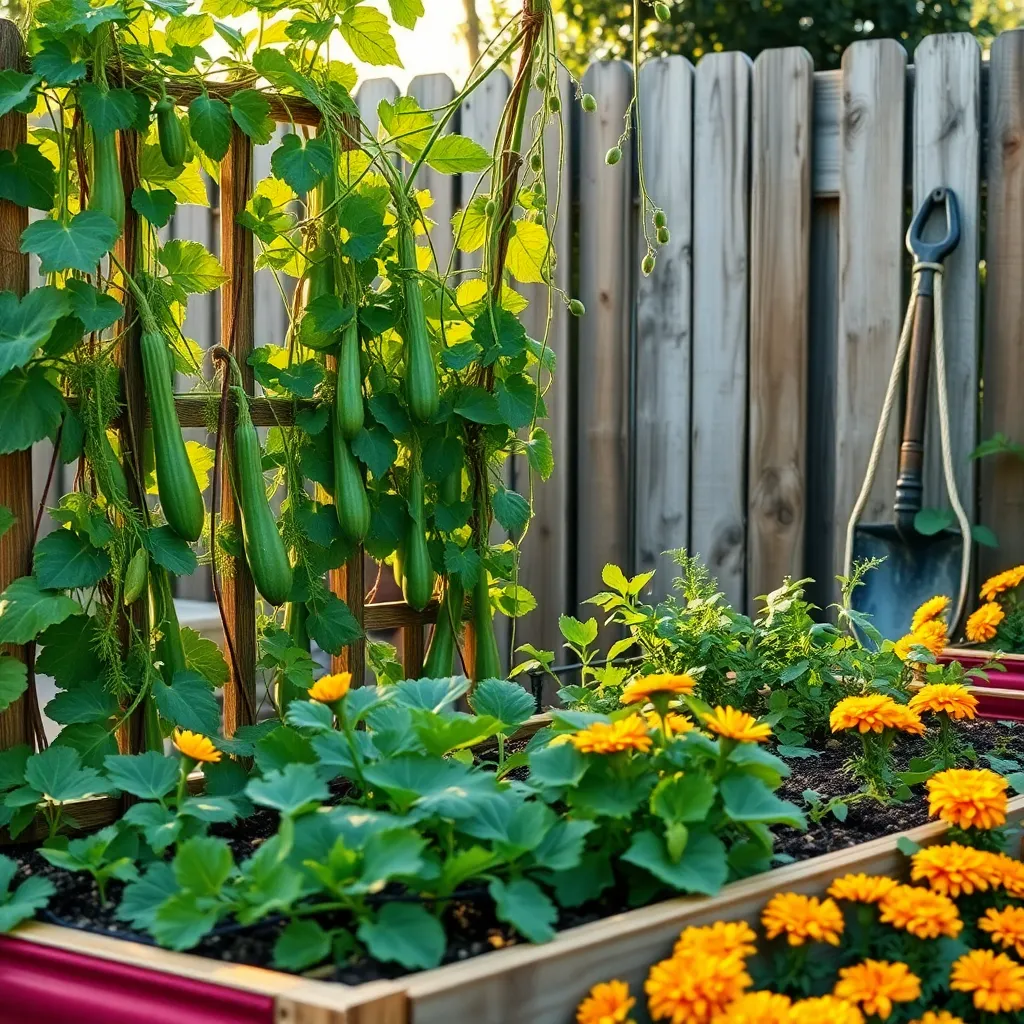
Trellises are an excellent addition to raised beds, providing support for climbing vegetables such as peas, beans, and cucumbers. These structures maximize vertical space, allowing you to grow more plants in a limited area, which is especially beneficial for small gardens.
When selecting a trellis, consider the specific needs of your plants and the durability of the material. Wooden trellises offer a natural look but may need annual treatment to withstand weather, while metal trellises provide a sturdy, long-lasting option.
Place your trellis on the north side of your raised bed to prevent shading other plants that require full sun. Secure the trellis firmly into the soil or the frame of the raised bed to withstand strong winds and the weight of mature plants.
For beginners, start with simple netting or string supported by stakes, which is easy to install and adjust. More experienced gardeners may want to experiment with arbor-style trellises for a decorative touch while supporting heavier vines like squash or melons.
Monitor Pests and Diseases Diligently
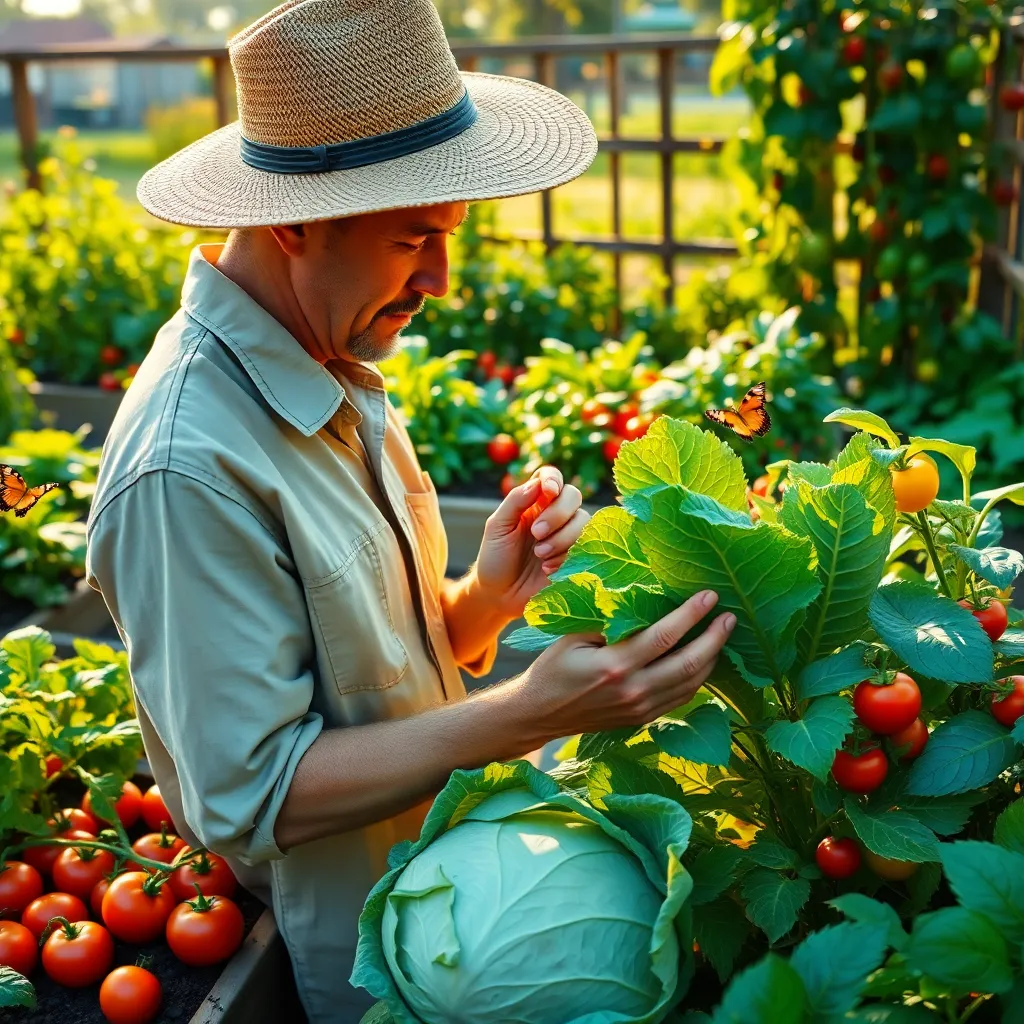
Keeping a watchful eye on your plants is crucial to maintaining a healthy vegetable garden. Regularly inspect the leaves, stems, and soil for any signs of pests or diseases, which can quickly spread if not addressed promptly.
It’s important to familiarize yourself with the common pests and diseases that affect the specific vegetables you are growing. For instance, cabbage worms and aphids are notorious for attacking leafy greens, so be vigilant and check your plants frequently.
Implementing integrated pest management (IPM) strategies can be highly effective in controlling unwanted visitors. Using natural predators such as ladybugs and beneficial nematodes can help keep pest populations in check without resorting to chemical pesticides.
Maintaining plant health through proper cultural practices can also reduce the susceptibility to pests and diseases. Ensure your plants are well-spaced to promote air circulation and avoid overwatering, which can lead to root rot and other moisture-related issues.
Conclusion: Growing Success with These Plants
In conclusion, nurturing your relationship is much like tending to a garden in raised beds. By prioritizing clear communication, actively listening, and investing time in shared activities, you can create a fertile ground for love to flourish. Understanding each other’s needs and setting healthy boundaries strengthens the roots of your connection, while showing appreciation and maintaining a sense of humor helps it bloom. Celebrating small milestones and continuously learning about each other ensures that your relationship remains vibrant and resilient against life’s challenges.
As an immediate next step, take a moment to reflect on which of these tips resonates most with you and discuss it with your partner. This simple act of engagement can set you on a path to deeper understanding and growth together.
Remember to save this article as a handy reference for those times when you need a gentle reminder of how to cultivate a thriving relationship. By doing so, you are investing in a future where your relationship not only survives but thrives. With dedication and love, you can nurture a partnership that endures the test of time, rooted in mutual respect and continuous growth.

